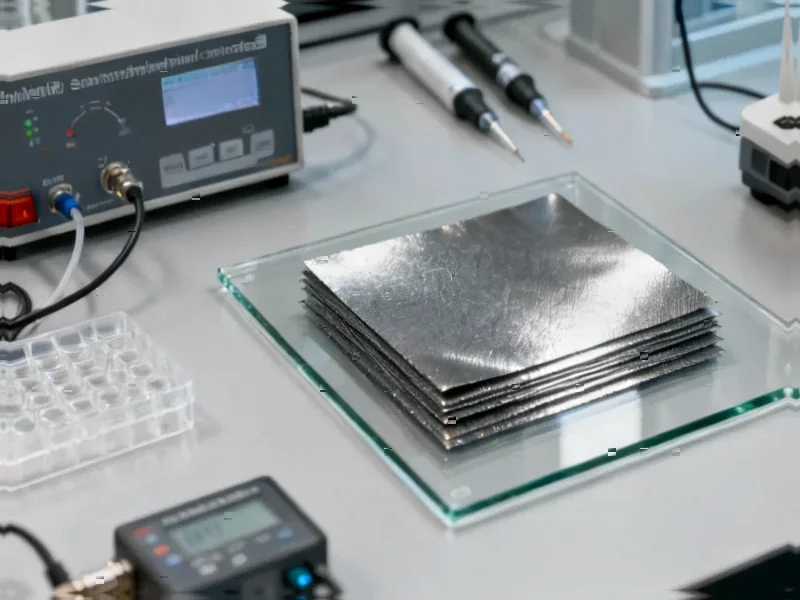According to Phys.org, chemists at the National University of Singapore have discovered that DNA’s phosphate groups can function as chiral catalysts for producing medicinal compounds. The research team led by Assistant Professor Zhu Ru-Yi from the NUS Department of Chemistry found that DNA’s negatively charged phosphate groups attract positively charged reactants through “ion-pairing,” similar to how magnets orient objects, steering chemical reactions to produce specific mirror-image versions of compounds. The researchers developed a novel “PS scanning” method to identify which specific phosphate positions were critical for this catalytic function and collaborated with Professor Zhang Xinglong from The Chinese University of Hong Kong on computer simulations to validate their findings. The research was published in the journal Nature Catalysis on October 31, 2025, marking a significant departure from DNA’s traditional biological role. This discovery opens new possibilities for sustainable chemical manufacturing.
The Chirality Challenge in Pharmaceutical Manufacturing
Chirality represents one of the most persistent challenges in pharmaceutical development, with approximately 50% of all marketed drugs and 90% of newly developed pharmaceuticals being chiral compounds. The infamous thalidomide tragedy of the 1960s demonstrated the devastating consequences when the wrong enantiomer reaches patients—while one form provided the intended therapeutic effect, its mirror image caused severe birth defects. Current methods for producing single-enantiomer drugs often involve complex separation techniques, expensive chiral catalysts, or multi-step synthesis routes that generate significant waste. The pharmaceutical industry spends billions annually on chiral resolution technologies, making any innovation in this space potentially transformative for both cost efficiency and patient safety.
How DNA Phosphates Function as Molecular Guides
The mechanism behind DNA phosphate catalysis represents a sophisticated application of electrostatic steering that differs fundamentally from traditional enzymatic or synthetic catalysis. Unlike enzymes that use precisely arranged amino acid residues in active sites, DNA phosphates leverage their inherent negative charge distribution along the helical backbone. When reactants approach, the phosphate groups create localized electrostatic fields that preferentially orient positively charged molecules in specific spatial configurations. This orientation control occurs before chemical bonds form, essentially pre-organizing the reaction partners in the optimal geometry for producing the desired enantiomer. The published research suggests this approach works across multiple reaction types because it targets the fundamental physical interactions rather than specific chemical transformations.
Technical Implications and Implementation Challenges
While the concept is elegant, practical implementation faces several technical hurdles. DNA’s structural stability under industrial reaction conditions remains questionable—many pharmaceutical syntheses require elevated temperatures, organic solvents, or extreme pH conditions that could denature or degrade DNA. The scalability of DNA-based catalysis for industrial production also presents economic challenges, as synthetic DNA remains expensive compared to traditional catalysts. However, the researchers’ PS scanning methodology provides a roadmap for optimizing DNA sequences for specific reactions, potentially enabling the design of minimal, stable DNA fragments that retain catalytic function while being cost-effective for large-scale applications. The ability to systematically identify critical phosphate positions means researchers could engineer synthetic oligonucleotides specifically tailored for industrial processes.
Broader Applications Beyond Pharmaceuticals
The implications extend well beyond drug manufacturing. This discovery could revolutionize asymmetric synthesis across multiple industries, including agrochemicals, flavors, fragrances, and materials science. Many pesticides and herbicides also exhibit chirality-dependent activity, with one enantiomer providing the desired effect while the other may be environmentally persistent or toxic. The food industry could benefit from more efficient production of chiral flavor compounds, where different enantiomers can have dramatically different taste profiles. The environmental benefits are equally significant—DNA is biodegradable, non-toxic, and can be produced from renewable resources, offering a sustainable alternative to heavy metal catalysts or complex organic molecules currently used in asymmetric synthesis.
Future Research Directions and Commercial Potential
The most exciting aspect of this discovery lies in its programmability. DNA’s modular nature means researchers could theoretically design custom catalysts by arranging phosphate groups in specific patterns along synthesized oligonucleotides. This approach could lead to a new class of “designer catalysts” optimized for specific industrial processes. The research team’s planned exploration of additional applications suggests they recognize the platform potential of this technology. From a commercial perspective, this could spawn specialized catalyst design services or licensing opportunities for pharmaceutical companies seeking more efficient routes to chiral intermediates. The convergence of biotechnology and synthetic chemistry represented by this work hints at a future where biological molecules routinely participate in industrial chemical processes they never encounter in nature.




